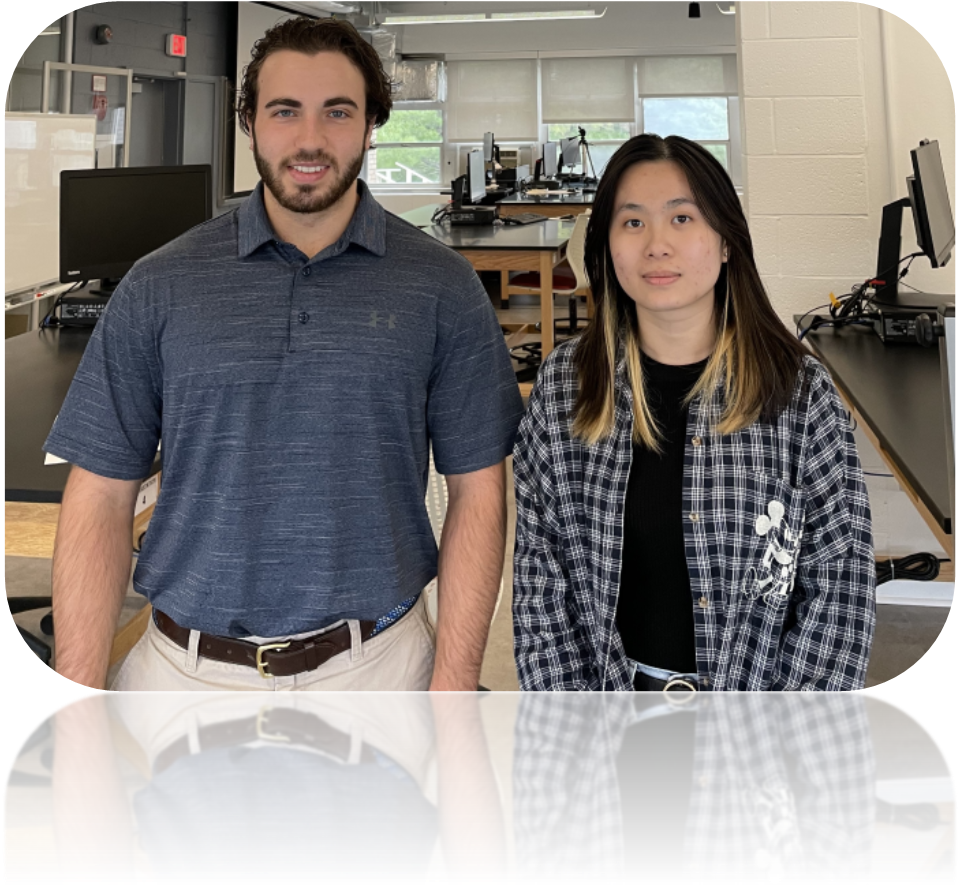Airway Simulator for Realistic Emergency Physician Training
Nhi Nguyen, Evan Hochstadter
Advisor: Dr. Nathan Neckel, Dr. Otto Wilson, Dr. Christopher Raub
Intubation treats trauma to the airway from an accident, respiratory illness that causes upper airway inflammation, asthma, chronic bronchitis, and COPD. Healthcare personnel I, especially those in emergency medicine and shock and trauma units, must know how to quickly safely and effectively intubate live patients. Current training models are expensive and not realistic. The goal of our design project was to find a way to train healthcare workers to successfully intubate the upper airways of patients in critical care/emergency conditions in under a minute to increase survival rate. The current state-of-the-art airway simulators available on the market today cost around $2,500 dollars and are equipped with sensors and full pathways of the bronchi. Intended users of this device are hospitals, nursing home caregivers, and college nursing programs. With greater access to training equipment, patients who need to be intubated will have a much higher survival rate because the trained professionals will be faster in completing a successful intubation. Our final design is intended to mimic a real upper respiratory airway as close as possible in order to prepare users for real situations.
Magnetically Guided Soft Robot for Cancer Therapy
Reginald Taylor-Smith, Joseph Robben
Advisor: Dr. Christopher Raub, Dr. Lamar Mair
Spinal tumors are difficult to treat surgically do to their location. The most common treatment for spinal tumors right now is stereotactic radiosurgery. This solution uses radiation to destroy precisely targeted areas of tissue. Spinal tumors are among the tumors accessible to microdevices via injection, due to their proximity to the cerebral spinal fluid inside the extramedullary space. We sought a way to treat patients with malignant tumors accessible by injection with effective yet less expensive therapies with lower side effects. The final design of our new product was a segmented snake magnetic gel microrobot. This device could be loaded with chemotherapy agents for localized treatment of tumors which will help lower the side effects of treatment. The magnet inside the gel also gives it the ability to be guided throughout the body. This soft robot will be much cheaper than other cancer treatment options like radiosurgery, and should also be much easier and quicker for both the patient and the doctor. This drug delivery method may also allow for new precision drug delivery to be used for other diseases, and will be further optimized with further research.
Rehabilitation Robot to Restore Finger Movement Post Stroke
Kathryn Cusumano, Preston Jeffrey, Lauren Zelnik
Advisor: Dr. Sang-Wook Lee
Every year in the United States, more than 795,000 people experience a stroke. Six months post stroke, approximately 65 percent of these patients are unable to incorporate the affected hand into their usual activities. There are currently several devices on the market to help with everyday hand use and therapeutic devices focusing on upper extremity movement; however, there are not many prototypes to assist in restoring functional finger motion. The goal of this project was to develop a way to reduce functional limitations for stroke patients with mild to moderate finger impairment. Currently, no existing device meets this need. The finger robot prototype is the first to focus on finger range of motion, specifically finger extension. It will positively impact the clinical field as an endpoint finger rehabilitation device. Additional uses include clinical research and patient training. This project's prototype stands out from competitors through its affordability, finger end points focused movement, and safety.




